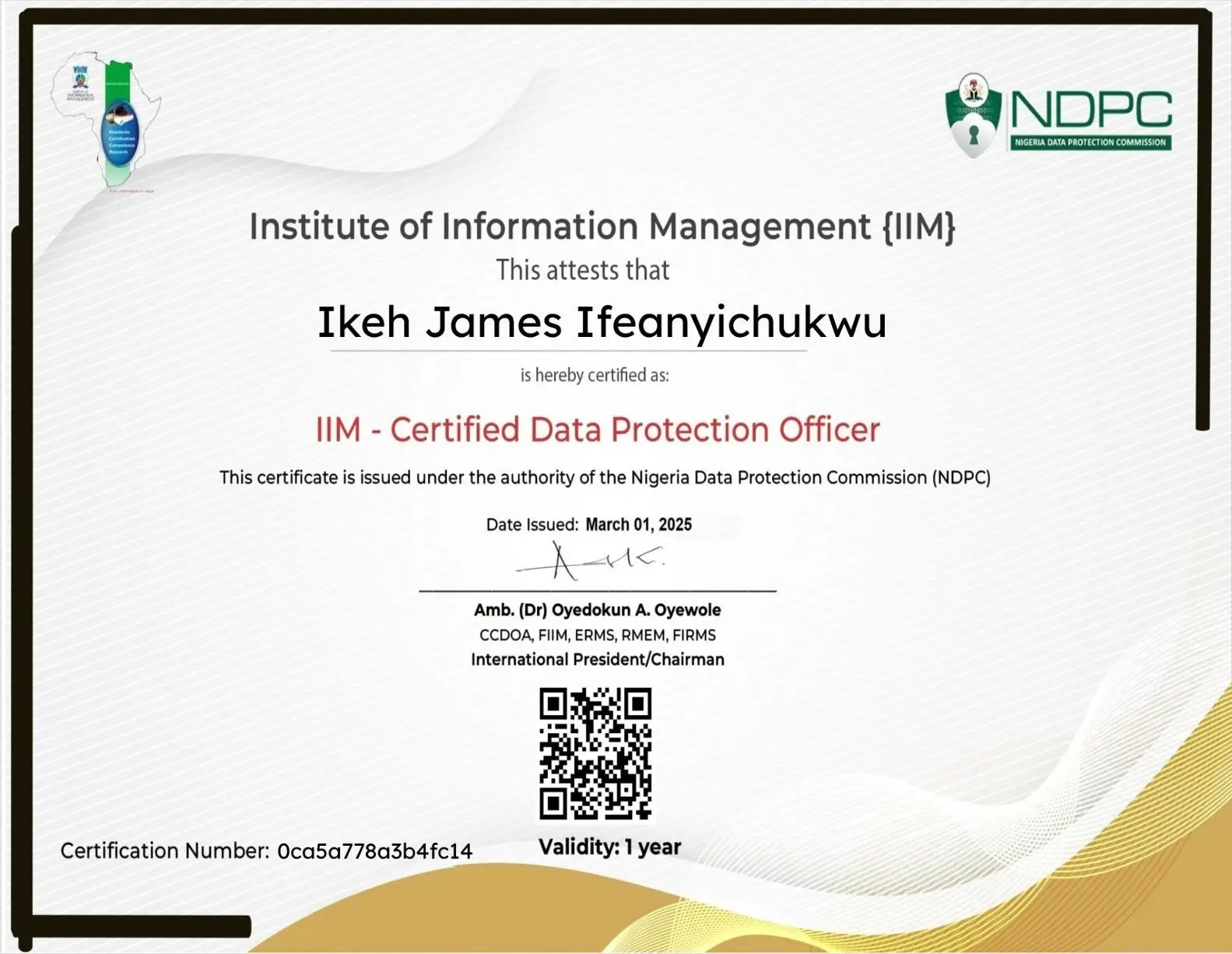Incident Response in Data Protection: How to Detect, Report, and Recover from Breaches
Share

When a data breach strikes, every second counts. Companies that delay response often face severe legal penalties, reputational damage, and loss of customer trust. This is why incident response—a structured approach to managing security breaches—is central to effective data protection.
In this guide, we’ll explore what an incident response plan is, how to detect and report breaches properly, and the key steps to recover swiftly while staying compliant with global privacy laws.
What Is Incident Response in Data Protection?
Incident response refers to the organized set of procedures an organization follows after detecting a data breach or cybersecurity incident. Its goal is to:
- Contain the threat
- Minimize damage
- Notify regulators and affected individuals where required
- Learn from the event to prevent future attacks
This process is vital under frameworks like the GDPR, NDPA (Nigeria Data Protection Act), CCPA, and HIPAA, all of which demand prompt and responsible action when personal data is compromised.
Why It Matters
Every organization that handles personal or sensitive data is a potential target. According to IBM’s Cost of a Data Breach Report 2024, the average cost of a breach reached $4.45 million globally, with detection and response time being a major cost driver.
A solid incident response plan can reduce the impact of a breach by up to 30%, prevent regulatory fines, and protect brand reputation.
The 6 Phases of an Effective Incident Response Plan
| Phase | Objective | Key Actions |
|---|---|---|
| 1. Preparation | Establish policies, tools, and teams before a breach occurs. | Create an incident response team, run simulations, define reporting lines. |
| 2. Detection & Analysis | Identify unusual activity or indicators of compromise. | Monitor systems for alerts, analyze logs, use intrusion detection tools. |
| 3. Containment | Prevent further damage and stop data loss. | Isolate affected systems, change access credentials, preserve evidence. |
| 4. Eradication | Remove the cause of the breach completely. | Eliminate malware, close vulnerabilities, patch exploited software. |
| 5. Recovery | Restore operations safely and verify integrity. | Rebuild systems, re-enable services, monitor post-recovery activity. |
| 6. Lessons Learned | Strengthen future defenses. | Document what happened, evaluate response, update policies. |
How to Detect a Data Breach Early
Early detection is the difference between minor damage and a full-blown crisis. Common indicators include:
- Unusual login attempts or spikes in network traffic
- Unexpected system behavior or data transfers
- Alerts from antivirus or security tools
- Reports from customers noticing suspicious account activity
Businesses should implement Security Information and Event Management (SIEM) systems and real-time monitoring tools to spot these red flags.
How to Report a Data Breach
Under most data protection laws, organizations must notify authorities and affected individuals within a specific timeframe:
| Law/Region | Notification Deadline | Authority/Body |
|---|---|---|
| GDPR (EU) | Within 72 hours | Data Protection Authority |
| NDPA (Nigeria) | As soon as possible | Nigeria Data Protection Commission (NDPC) |
| CCPA (California) | Without unreasonable delay | California Attorney General |
| HIPAA (USA) | Within 60 days | U.S. Department of Health and Human Services |
Failure to report promptly can lead to massive fines—up to €10 million or 2% of global annual turnover under the GDPR.
How to Recover from a Breach
Once containment and reporting are complete, recovery focuses on restoring trust and rebuilding security. Key actions include:
- Conduct a forensic investigation to understand how the breach occurred.
- Communicate transparently with customers and regulators.
- Provide identity protection services if personal data was exposed.
- Reinforce security controls—multi-factor authentication, data encryption, and staff retraining.
- Perform post-incident audits to confirm all vulnerabilities have been addressed.
Real-World Example: British Airways’ GDPR Breach
In 2018, British Airways suffered a major breach affecting 400,000 customers. Attackers diverted user traffic to a fraudulent site that harvested credit card details.
The UK Information Commissioner’s Office (ICO) fined the company £20 million, emphasizing the importance of early detection and strong incident response measures.
Best Practices for an Incident Response Team
- Assign clear roles: Incident commander, forensic analyst, communications lead, compliance officer.
- Keep an updated contact list for regulators and external security experts.
- Conduct regular simulations (tabletop exercises) to test readiness.
- Store your incident response plan offline in case digital systems are compromised.
FAQs
1. What is the first step after detecting a data breach?
Immediately contain the threat—disconnect affected systems and preserve evidence for investigation.
2. Who should be notified after a breach?
Notify your internal data protection officer, regulatory authority, and affected individuals if their data was exposed.
3. Can a small business be fined for not reporting a breach?
Yes. Size doesn’t matter under privacy laws—any entity processing personal data is obligated to report.
4. How often should an incident response plan be tested?
At least twice a year, or after major system changes, to ensure preparedness.
Conclusion
A data breach can happen to any business—but how you respond defines the outcome. A well-prepared incident response plan ensures you detect threats early, act swiftly, comply with laws, and recover stronger.
In the digital age, incident response isn’t just IT hygiene—it’s data protection leadership.


























Leave a Reply